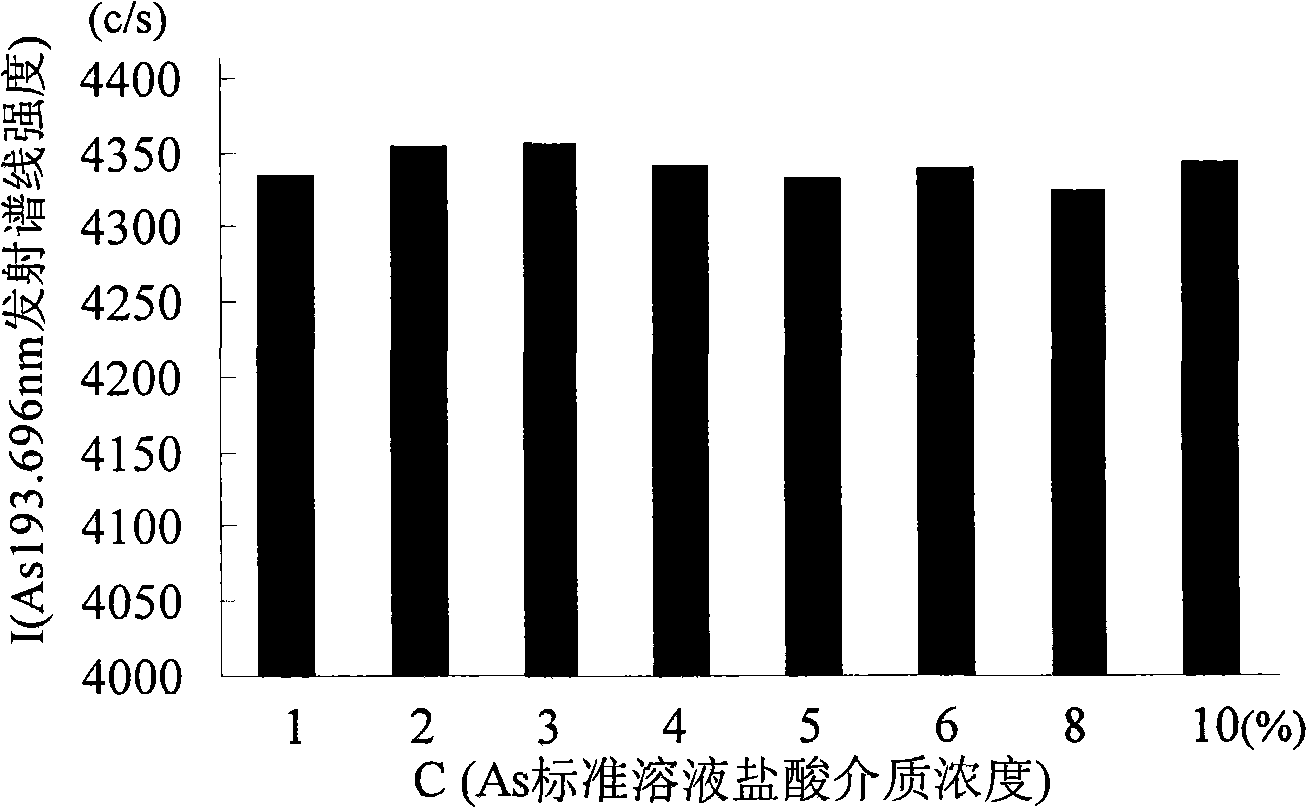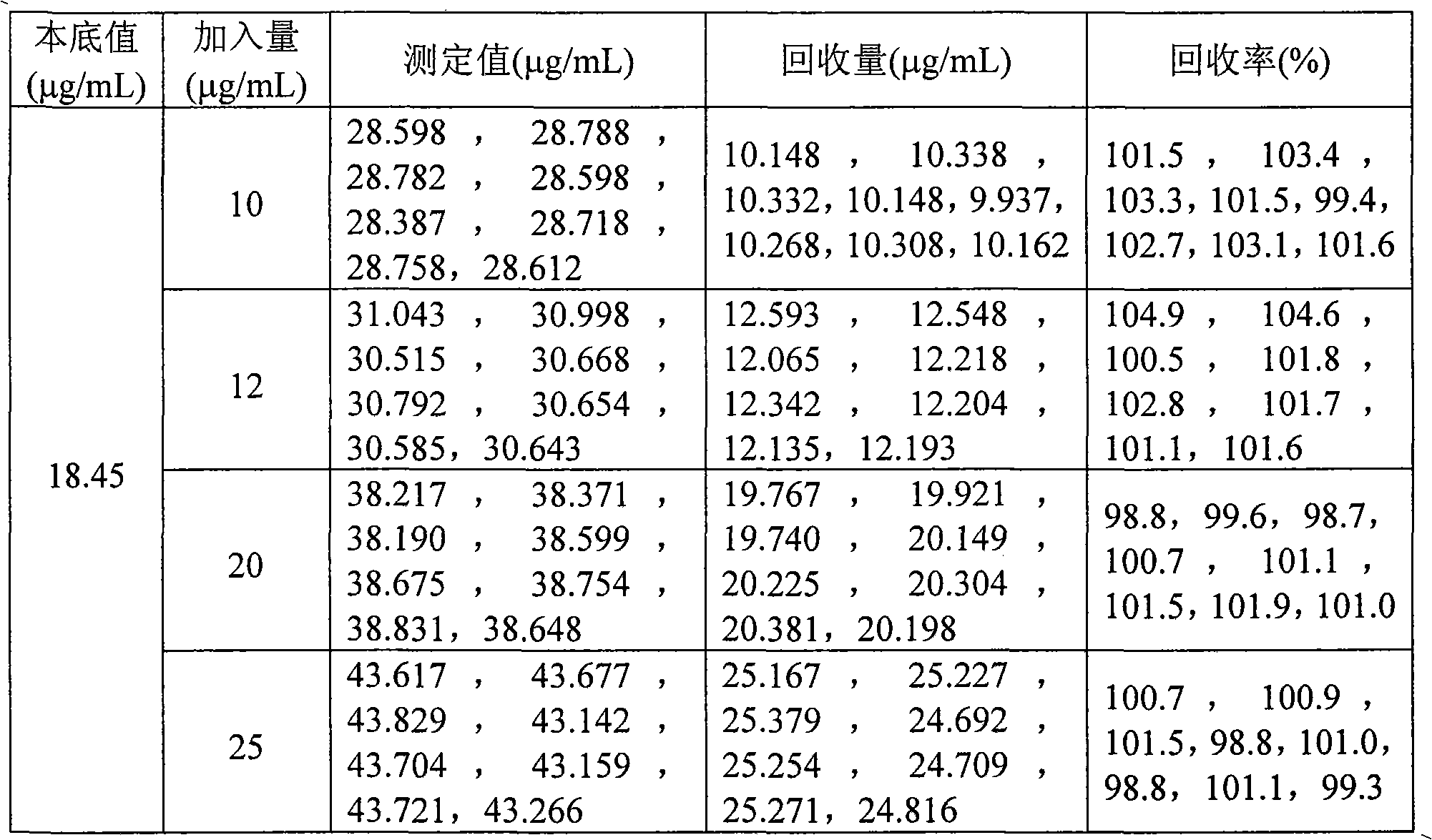Method for analyzing arsenic content in glass refining agent
An analysis method and clarifier technology, applied in the field of physical and chemical testing, can solve the problems of arsenic volatilization loss, analysis precision reduction, long analysis period, etc., and achieve the effect of avoiding volatilization loss, simple analysis process, sensitive and repeatable
- Summary
- Abstract
- Description
- Claims
- Application Information
AI Technical Summary
Problems solved by technology
Method used
Image
Examples
Embodiment 1
[0032] 1. Instruments and reagents
[0033] XS-205 automatic electronic analytical balance (Switzerland, Mettler-Toledo company);
[0034] Vista Axial CCD Simultaneous ICP-AES Spectrometer (USA, Varian company), charge-coupled detector, dispersive system is echelle grating, concentric nebulizer, frequency is 40.68MHz, the instrument is controlled by IBM computer and Varian'sVista software system.
[0035] Instrument working parameters: power 1.1kW, cooling gas flow 15L / min, auxiliary gas flow 1.5L / min, atomizing gas flow 0.8L / min, integration time 5s; repeat times 3 times, stabilization time 20s, sample lifting time 20s , cleaning time 10s, peristaltic pump speed 15rpm; argon purity 99.99%.
[0036] Acidity: HCl is used as the solution medium, and the concentration of HCl is 4% (V / V).
[0037] Analytical spectral line: The measured spectral line of As element is As 193.696nm.
[0038] The concentration of arsenic single element standard solution is 1mg / mL (GSBG62028-90, Nat...
Embodiment 2
[0047] In order to verify the accuracy of the analysis method of the present invention to measure arsenic in the glass clarifier sample and evaluate the precision of the analysis method, the following experiments are carried out on actual samples:
[0048] 1. Detection limit experiment
[0049] Use the sample blank test solution to measure ten times continuously, and calculate the standard deviation of arsenic in the sample blank solution. The results are shown in Table 2.
[0050] Table 2.
[0051] Determining element
Analytical lines
(nm)
Determination result (μg / mL)
standard deviation
3 times the standard deviation
arsenic
193.696
0.025,0.040,0.041,0.033,
0.034,0.037,0.038,0.034,
0.027,0.032
0.005
0.015
[0052] Set 3 times the standard deviation of the arsenic blank solution as the detection limit of arsenic, that is, 0.015 μg / mL is the minimum concent...
PUM
 Login to View More
Login to View More Abstract
Description
Claims
Application Information
 Login to View More
Login to View More - R&D
- Intellectual Property
- Life Sciences
- Materials
- Tech Scout
- Unparalleled Data Quality
- Higher Quality Content
- 60% Fewer Hallucinations
Browse by: Latest US Patents, China's latest patents, Technical Efficacy Thesaurus, Application Domain, Technology Topic, Popular Technical Reports.
© 2025 PatSnap. All rights reserved.Legal|Privacy policy|Modern Slavery Act Transparency Statement|Sitemap|About US| Contact US: help@patsnap.com



